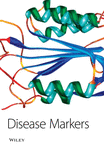CYP17 MspA1 Polymorphism and Age at Menarche: A Meta-Analysis
Abstract
Objective: Literature data on the effects of CYP17 MspA1 polymorphism on age at menarche (AAM) are inconsistent. To reexamine this controversy, we performed a meta-analysis.
Study design: In total 16 studies containing more than 11000 individuals of various ethnicities were selected for the analyses. For 11 case-control studies, odds ratio (OR) was employed to evaluate the risk of late AAM for each study, using homozygote at the wild-type allele as a control group. For the 5 studies with continuous outcomes, the effect size was estimated using the Hedges’ adjusted g, which is calculated based on the standardized mean difference between groups of subjects with early and late AAM.
Results: We did not find evidence for association of the MspA1 polymorphism with AAM in the combined case-control sample with mixed ethnic background (OR = 1.03, 95% CI: 0.90–1.18, P = 0.66), in the monoethnic case-control sample of Caucasian females (OR = 1.09, 95% CI: 0.99–1.20, P = 0.08) and in the combined sample with continuous traits (Hedges’ g = 0.33 and −0.041, 95% CI: −0.14–0.80 and −0.18–0.10, P values 0.17 and 0.56 for the pooled population sample and monoethnic sample of Caucasian females, respectively).
Conclusion: Our study showed that CYP17 MspA1 polymorphism was not a significant independent risk factor of AAM. Further studies are needed to clarify the effects of the interaction between this gene and other genetic and/or environment factors on AAM.




